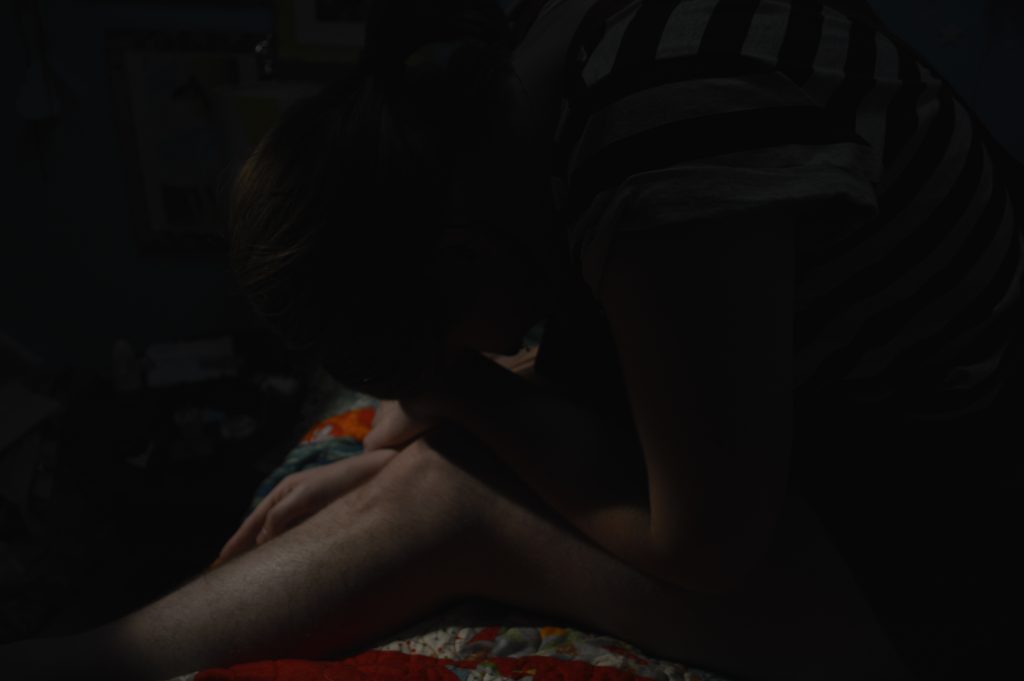Taking inspiration from Magdalena Wywrot I wanted to create high contrast pieces. However, this took me a few shots to get right. The following image was shot at a low ISO (100) and my model can hardly be seen within the blacks of the room. In this image I had two dedo lights one bouncing off the roof as a spotlight and another on the legs.

While I tried to aim the lights directly on my models face, the ISO I was shooting at was still to low. A lot of my test shots are on the dark side, so going into my second shoot I will know to up the ISO as when I shot around 800 the photos were much brighter.

I like the warm light in this photo but I don’t know how this will translate in postproduction when trying to create high contrast pieces. I also like the use of depth of field as it makes her body look almost dettached.

In this test shot where I used a prop to create the bokeh effect around my model. I am exicited to see how this effect could translate in greyscale as I think it could create an errie shot. However I am still shoting at to low of an ISO at this point.

The ISO here was bumped up to 800, and my shutter speed was 1/60. I was trying to capture movment however figuered I would have to go for a longer exposure.

Turning to shutter speed down to 1/30 allowed me to get this shot however I want to push how much movement I can capture in my photos. I also like how the hard spot lights gives the image a natural vingerette.

The shutter speed for this image is 6 however I did not capture at the right time. I think 2 secounds would have been enough to capture the movement. This is a skill I hope to improve on in the furture. I will also try using a tripod next time I try long exposure.

Reflection:
Looking at these images it is easy to focus on the errors. However by completeing this shoot I now know my probable technical procedure and also the kind of images I want to create. I like tight compostions where the model’s face is mainly in focus or long body shots where depth of field works to break up the body. I like using moition and long exposure to create overwordly images and I like the intergration of props to create something different. Reshooting these I will look to keep the ISO high (at least 800) will work to create hard spot lighting rather than soft bouncing effects and use a low shutter speed 2 to 3. Fstop changed based on what I was shooting. But could range awhere from 5 when shooting long shotx to 36 when shooting long exposure.
